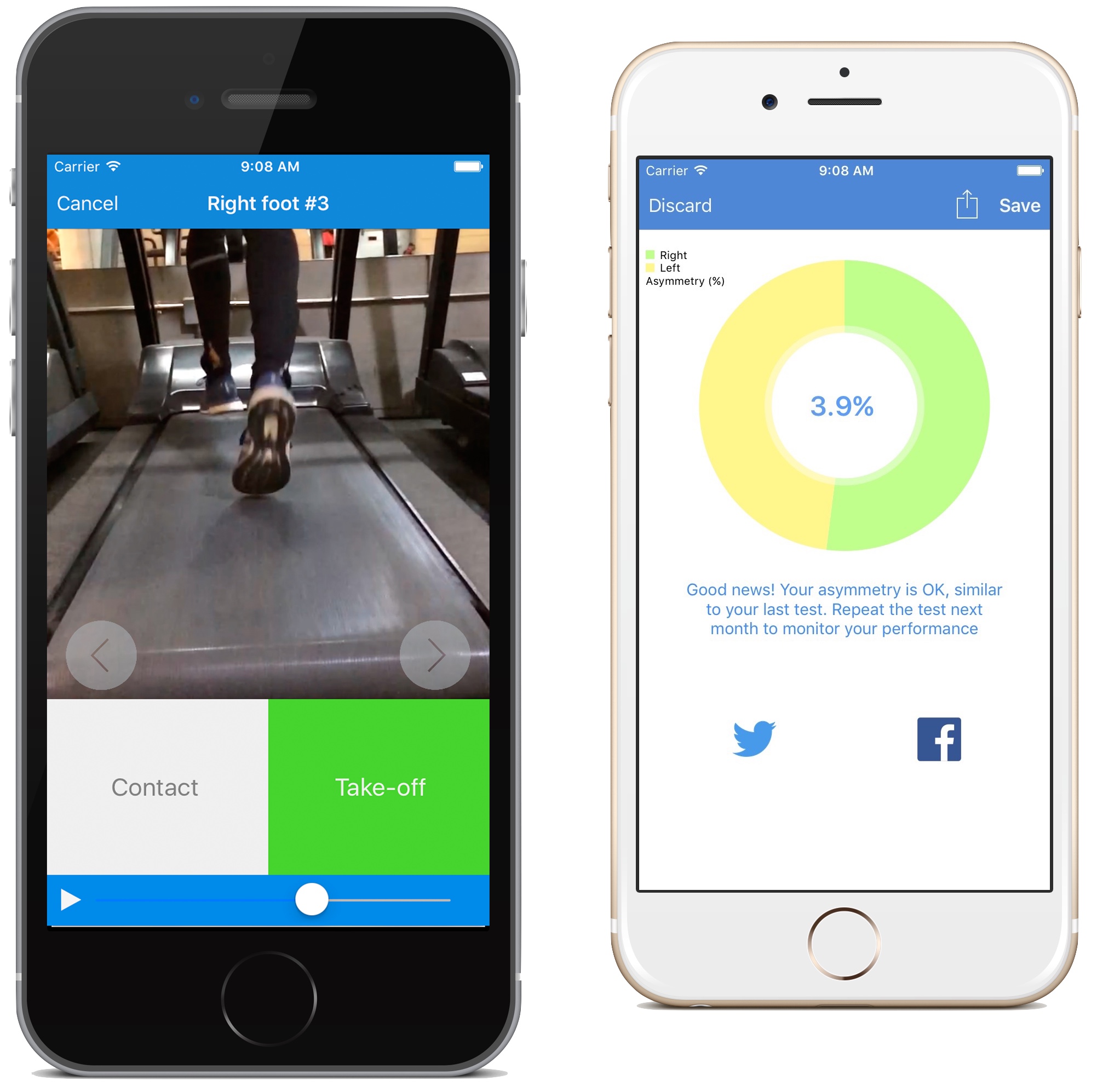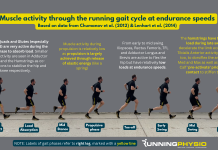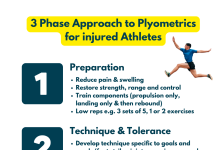Our articles are not designed to replace medical advice. If you have an injury we recommend seeing a qualified health professional. To book an appointment with Tom Goom (AKA ‘The Running Physio’) visit our clinic page. We offer both in-person assessments and online consultations.
Gait analysis can be an integral part of running injury management and yet, for many clinicians, we lack the technology needed to fully assess biomechanics. Smartphone Apps are providing some interesting solutions but we need to know that their data is both reliable and valid. One App that has caught our eye in this regard is Runmatic whose creators have worked hard to provide the scientific evidence required. We approached the App’s creator, Dr. Carlos Balsalobre-Fernández, to find out a little more about his innovative tool and he kindly agreed to give us a detailed run-down…
You can follow Carlos on Twitter via @cbalsalobre and the app via @runmatic_. For more from Carlos including links to his research check out his website. If you’re interested in Runmatic you can download it from the app store.
Understanding how do we run is of critical importance to improve our running performance and to prevent lower limbs injuries. For example, one of the most studied variables of the gait is how we place the foot on the floor to run (rearfoot vs. forefoot) for its implication in lower limb injuries (1,3). However, there is much more information about the kinetics (i.e., the forces) and kinematics (i.e., the motion) of our running style that can be analyzed to monitor performance and help in injury prevention programs.
In this sense, variables like contact time, flight time, vertical oscillation or leg stiffness, among others, have shown to be well linked to running performance. Specifically, those variables have been used to measure the cost of running, i.e., the energy used to move ourselves forward at a certain speed (4,8).
Thus, shorter contact times, higher flight times, shorter vertical oscillation (i.e., the vertical displacement of the Center of Mass while running, a metric indicating how much do we ‘bounce’) and higher leg stiffness (i.e., how ‘reactive’ are our steps; the higher leg stiffness, the higher elastic energy produced by our tendons) would mean greater running economy (4,7). Finally, it was proposed that the asymmetry between legs on running mechanics variables could lead to lower limb injuries (2,6), making its monitoring through time interesting in the context of injury prevention.
The main problem of measuring running mechanics is the technology required to do so, which often consists of force platforms, optoelectronic devices or advanced 3D-camera systems. These technologies, while highly accurate, are very expensive for the general population preventing its use outside laboratories or high-performance sports centres or clinics. Thus, democratization of this kind of technology is needed to bring these advanced measurements to coaches, athletes and physiotherapists who can’t access to expensive devices.
Runmatic: measuring your running mechanics with your iPhone or iPad
Bridging the gap between advanced measurements and affordable technology, an iPhone/iPad app which measures running mechanics has been recently released. This app (called Runmatic) uses the slow-motion capabilities on devices like the iPhone 5s, 6, 6Plus, 6s, 6sPlus, iPad Mini 4 or iPad Air 2 to record the feet of the runners and to calculate the contact time, flight time, step frequency, maximal force, vertical oscillation and leg stiffness, variables of great importance for running performance as mentioned above. Moreover, Runmatic also provides the per cent of asymmetry between legs, a metric that could be of great interest to monitor the potential injury risk of the lower limbs.
To do this, Runmatic records 8 consecutive steps at a high rate (regular cameras records at 30 frames per second, while new iPhones and iPads can record up to 240fps), allowing to detect the contact and take-off of each in an accurate way. Then several equations based on the spring-mass model (5) are used to calculate the aforementioned running mechanics variables in a valid and reliable way. To test this, Dr Carlos Balsalobre-Fernández (the developer of Runmatic) and Pr. Jean Benoit Morin (expert in running mechanics) conducted an experiment in which about 100 steps at different speeds were measured simultaneously with Runmatic and the Optojump Next system, a professional infrared platform that measures contact and flight times while running in a very accurate way, and then they compared the results. The values obtained with Runmatic were highly correlated with those obtained with the platform, with a mean difference between instruments of about 5 milliseconds. Thus, Runmatic was proven to measure running mechanics in a valid, reliable and affordable way. The scientific paper with these research outputs is recently under review in a top sports sciences journal.
How does Runmatic work?
Runmatic is a video-analysis based app, and it was designed to be as most easy-to-use as possible. You just need to make a subject run at a certain speed on a treadmill and to record his/her feet from the back with the app. Then, you will be able to navigate frame by frame through the video and to select the contact and take-off of 8 consecutive steps by a tap on the screen. Finally, you will be asked for the subject’s body mass, height and the running speed, and Runmatic will instantaneously calculate the contact time, flight time, step frequency, maximal force, vertical oscillation and leg stiffness of each step, as well as leg asymmetry.
But what is most important, Runmatic allows you so save as many subjects and as many runs as you want in the app’s memory so you can monitor your athletes and patients through time. The app also informs about the per cent of change from one test to another in every metric and it even warn you if your leg asymmetry is increased significantly, which could be a red light for your injury prevention monitoring.
Note that the selection speed is at your choice. It seems that the pace at we usually run is the most convenient speed to test, since running economy is greater at our preferred pace. So, for example, if your 10k pace is 4 min/km (14.8 km/h), that would probably be the best speed to test in Runmatic. However, if you want to make a deeper analysis, you can test different speeds (for example, 10, 12 and 16 km/h): maybe you are doing ok at a certain pace but at high speeds problems occurs.
Anyhow, measuring running mechanics in a regular basis could be of great interest to monitor the evolution of your performance and to help you in your injury prevention program. And now, you can do it just with your iPhone or iPad without further advanced technologies.
Fo more info;
Carlos’s twitter: @cbalsalobre
Runmatic’s twitter: @runmatic_
Website: http://www.carlos-balsalobre.com/#Runmatic
Download link: https://itunes.apple.com/us/app/runmatic/id1075902287?l=es&ls=1&mt=8
References
1. Hall, JPL, Barton, C, Jones, PR, and Morrissey, D. The Biomechanical Differences Between Barefoot and Shod Distance Running: A Systematic Review and Preliminary Meta-Analysis. Sport Med 43: 1335–1353, 2013.
2. Hewit, J, Cronin, J, and Hume, P. Multidirectional Leg Asymmetry Assessment in Sport. Strength Cond J 34: 82–86, 2012.
3. Lieberman, DE, Venkadesan, M, Werbel, WA, Daoud, AI, D’Andrea, S, Davis, IS, et al. Foot strike patterns and collision forces in habitually barefoot versus shod runners. Nature 463: 531–5, 2010.
4. Moore, IS. Is There an Economical Running Technique? A Review of Modifiable Biomechanical Factors Affecting Running Economy. Sport Med , 2016.
5. Morin, JB, Dalleau, G, Kyröläinen, H, Jeannin, T, and Belli, A. A simple method for measuring stiffness during running. J Appl Biomech 21: 167–180, 2005.
6. Pappas, P, Paradisis, G, and Vagenas, G. Leg and vertical stiffness (a)symmetry between dominant and non-dominant legs in young male runners. Hum Mov Sci 40: 273–83, 2015.
7. Saunders, PU, Pyne, DB, Telford, RD, and Hawley, JA. Factors affecting running economy in trained distance runners. Sport Med 34: 465–485, 2004.
8. Shaw, AJ, Ingham, SA, and Folland, JP. The valid measurement of running economy in runners. Med Sci Sport Exerc 46: 1968–1973, 2014.












All this easily accessible motion capture is all very exciting. I am embarking on a piece of research looking at tkd front and side kicks. I plan to investigate various methods of recording these including an app. I am investigating the most practical and reliable method. Luckily I have access to vicon so will use this as my gold standard. Does anyone have any suggestion as to a good app for this purpose?
[…] the runner on the left change her position at toe-off and become less ‘bouncy’. Recent developments in mobile technology allow us to measure vertical oscillation in clinic and determine if this ‘bounciness’ […]
Comments are closed.